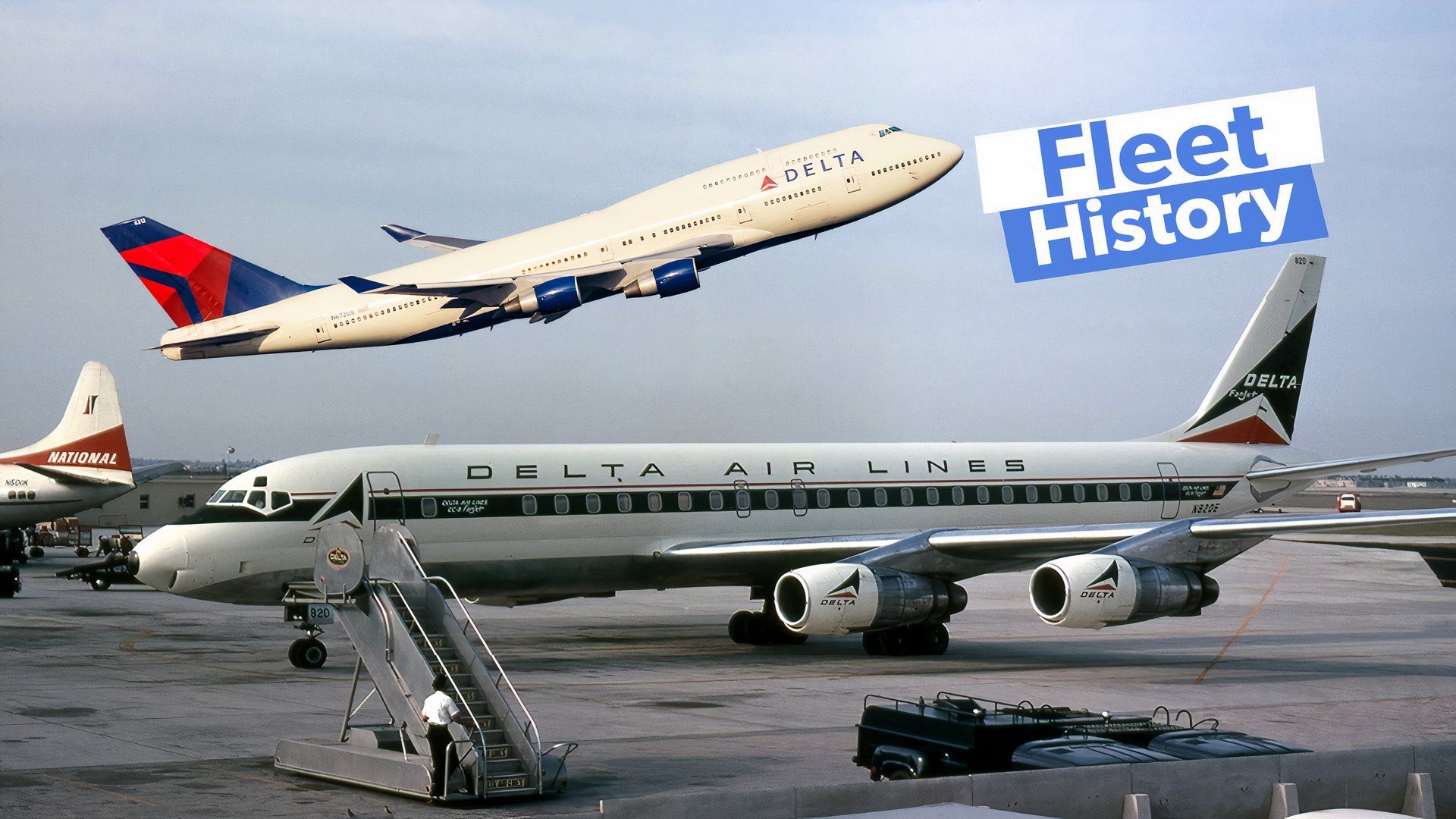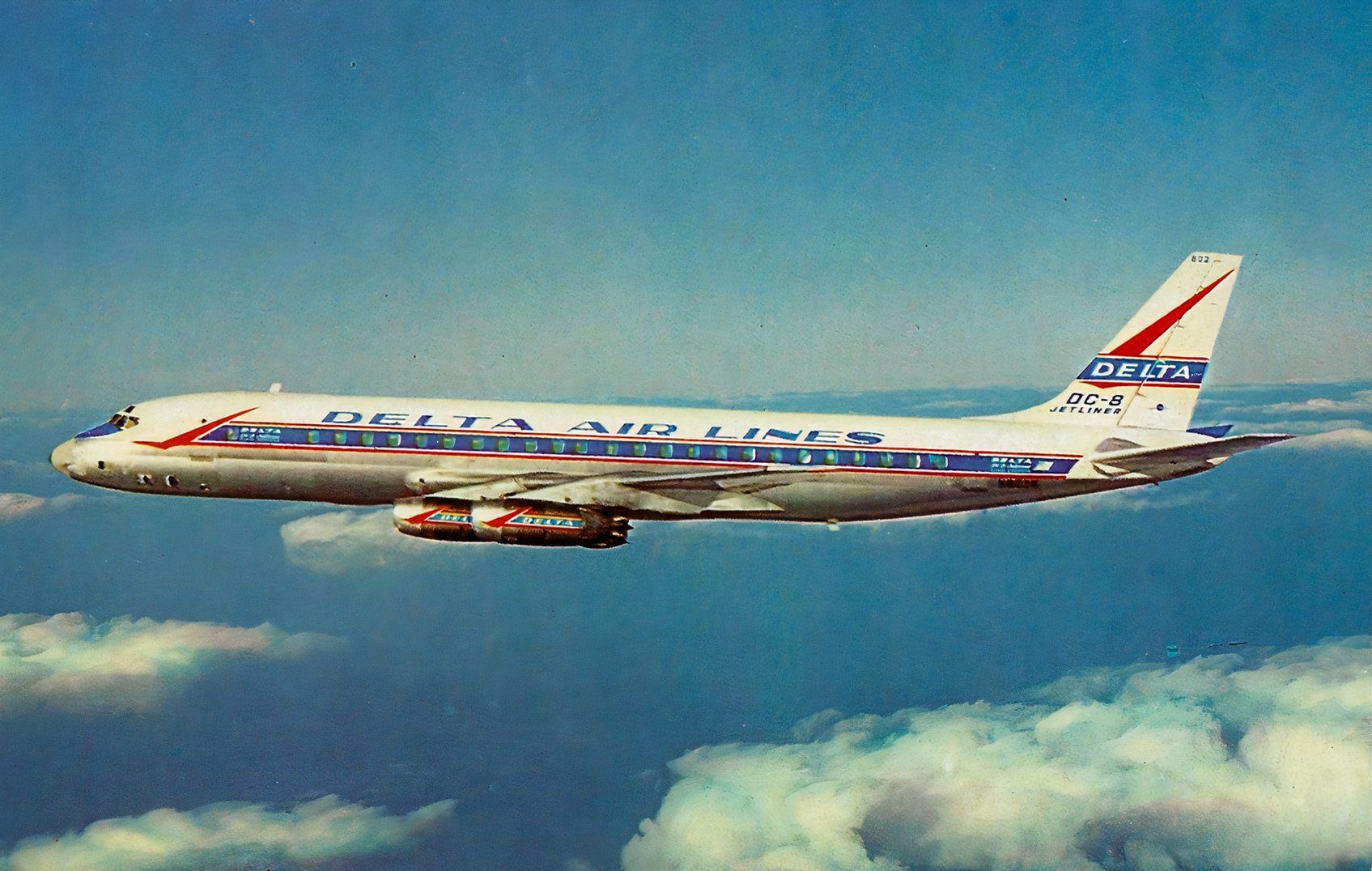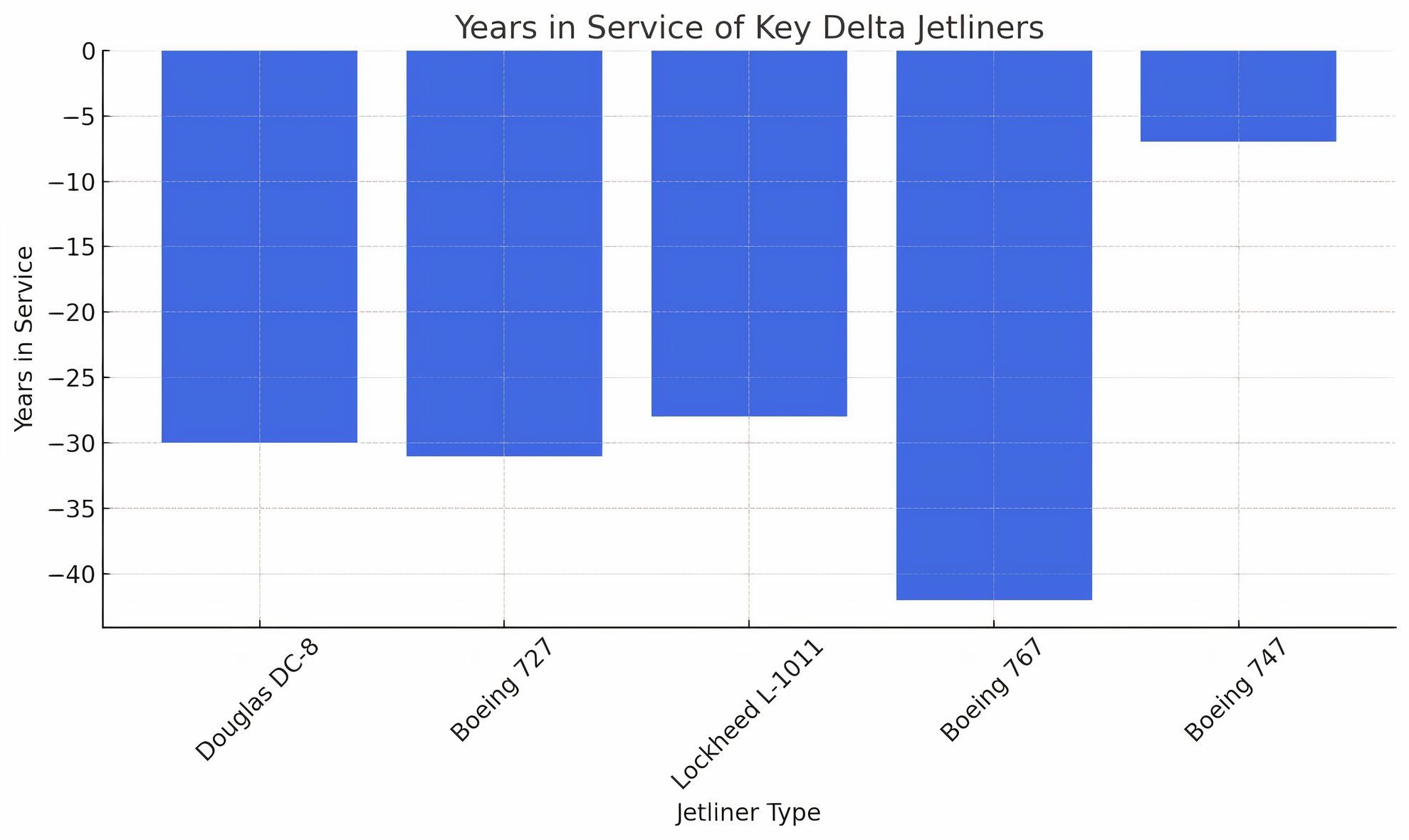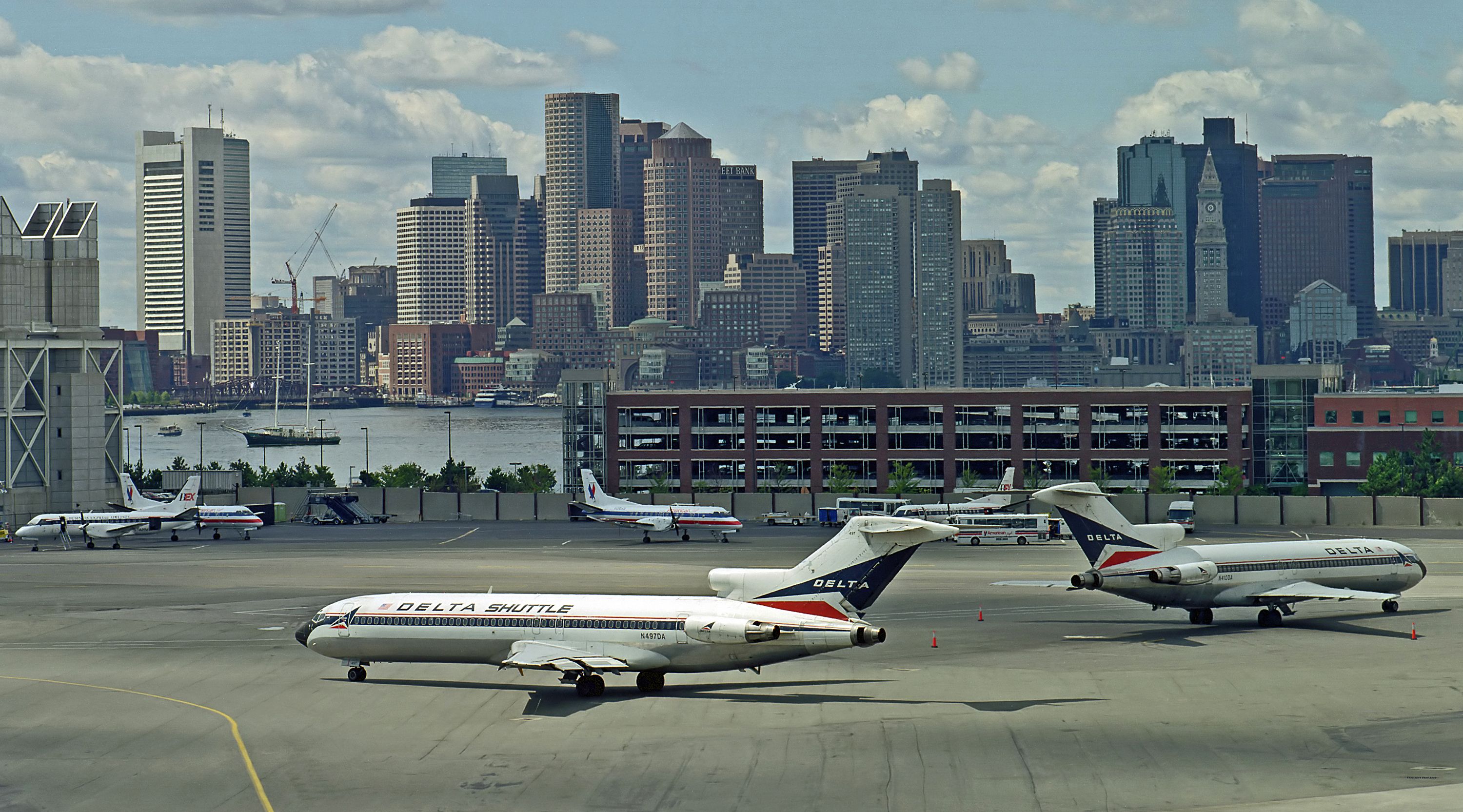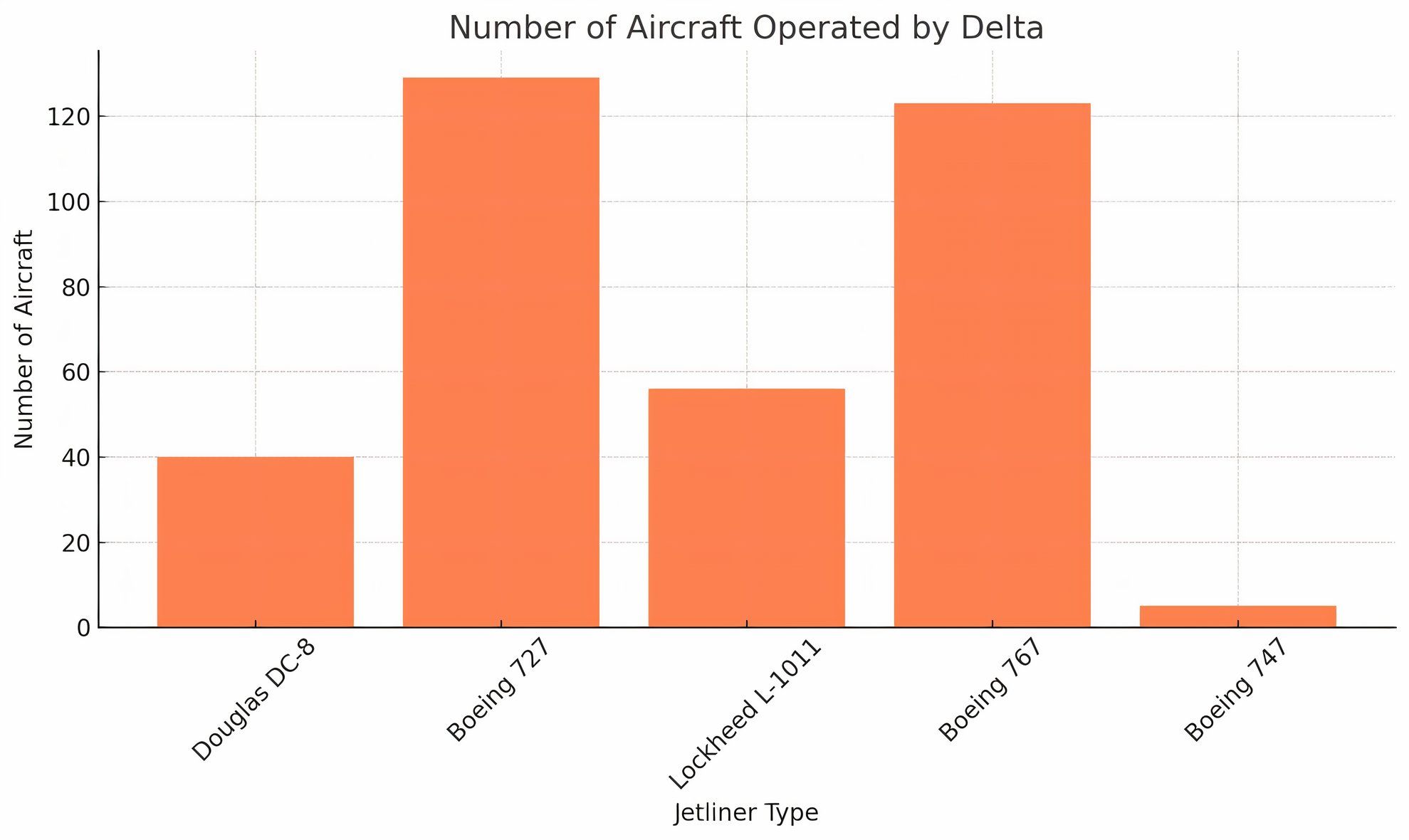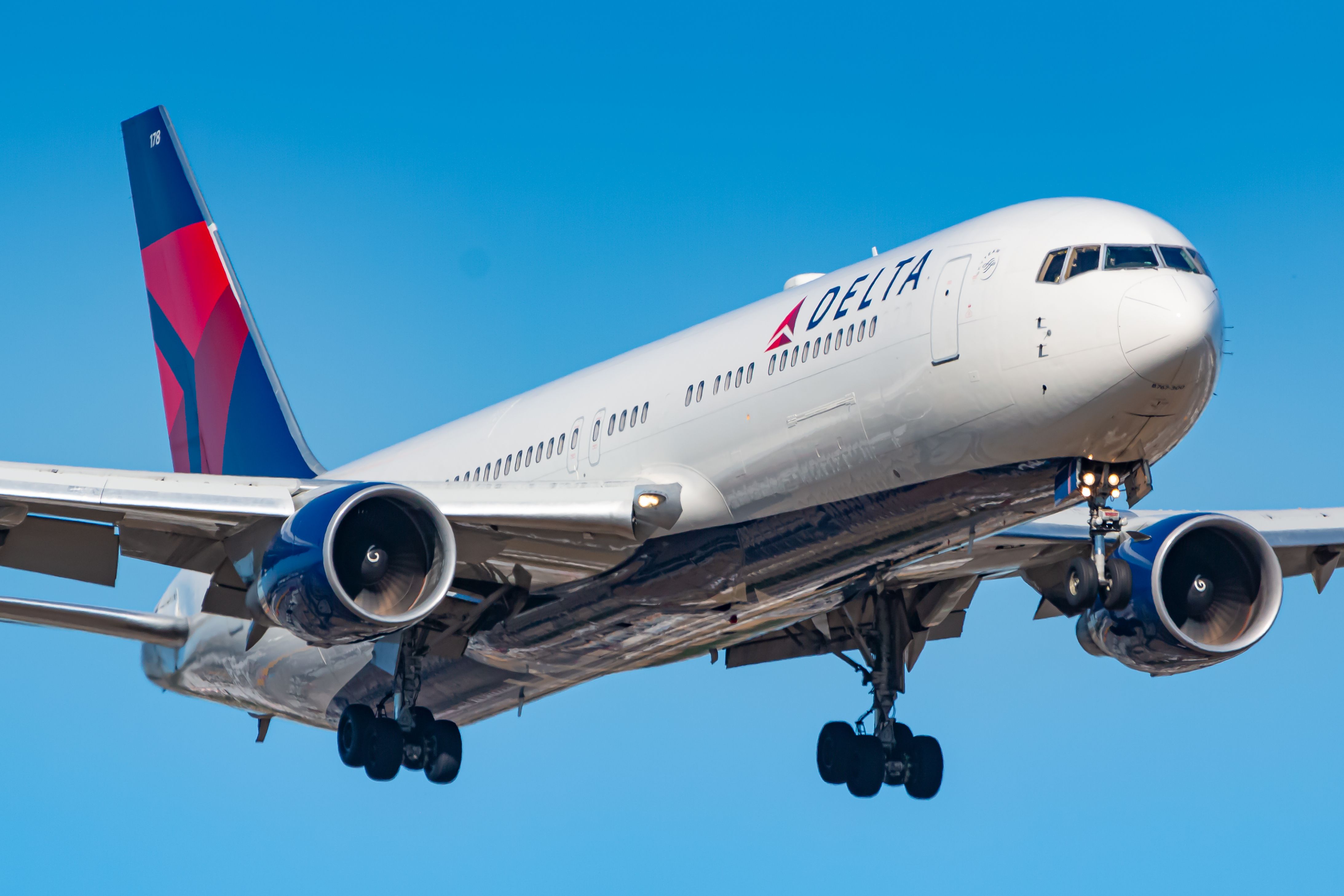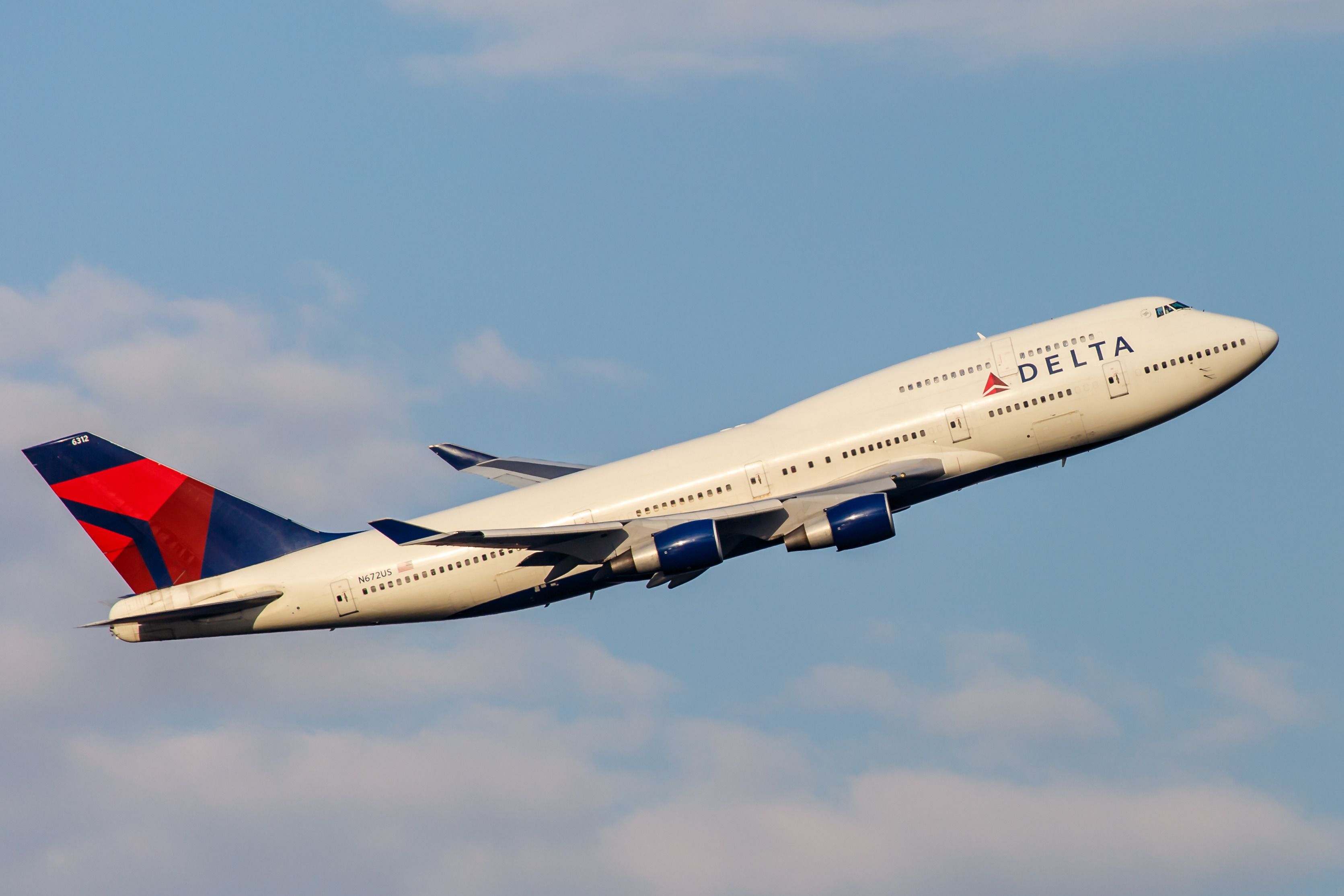Delta Air Lines, one of the world’s largest and most successful carriers, has built a storied history that dates back nearly a century. From humble beginnings as a crop-dusting operation, Delta has evolved into a global airline, serving millions of passengers each year. A key part of this evolution has been the jetliners in Delta’s fleet, which have defined different eras of its operations. Here are five of the most notable aircraft that have shaped Delta’s history.
1
Douglas DC-8
1959–1989
According to the Delta Flight Museum, the Douglas DC-8 marked Delta’s entry into the jet age in 1959, when it became the first airline to launch a DC-8 jet service. This aircraft was pivotal in expanding Delta’s long-haul operations, bringing jet-powered efficiency to the skies.
The first DC-8, Ship 801, flew Delta’s inaugural jet service between New York and Atlanta in September 1959. With its more extended range and larger passenger capacity, the DC-8 was a game changer for Delta, facilitating transcontinental and international flights.
Notably, Delta’s DC-8 became the first commercial jet to fly between Los Angeles and Atlanta in under three hours, setting a new standard in speed for domestic travel. The DC-8 also played a significant role in scientific research, such as participating in an astronomical mission to observe a solar eclipse in 1963.
Delta operated various versions of the DC-8, with the modernized DC-8-71 series extending its operational life until 1989.
2
Boeing 727
1972–2003.
The Boeing 727 was another cornerstone of Delta’s fleet, renowned for its versatility on short and medium-haul routes. Delta began flying the 727 after acquiring its initial fleet through the merger with Northeast Airlines in 1972. The 727’s ability to operate from shorter runways allowed Delta to serve a broader range of cities, including those with smaller airports.
Photo: QualityHD | Shutterstock
At its peak, Delta operated 129 Boeing 727s, the world’s largest fleet of this type. The 727 became a workhorse for Delta, flying more than 400,000 miles and carrying 65,000 passengers every day. Its impressive fuel efficiency and operational flexibility made it a crucial part of Delta’s fleet for over 30 years until its retirement in 2003.
3
Lockheed L-1011 TriStar
1973–2001.
The Lockheed L-1011 TriStar was Delta’s flagship widebody jet during the 1970s and 1980s. The airline was one of the largest operators of the L-1011, with a fleet that at one point included 56 of these iconic aircraft.
The TriStar was known for its cutting-edge technology, including advanced autopilot and automatic landing systems, which allowed it to land in zero-visibility conditions—an industry first at the time.
The spacious, “high, wide, handsome” cabin made it a passenger favorite. In addition to domestic routes, the L-1011 enabled Delta to launch its first transatlantic flights to London and Frankfurt. The aircraft’s long-range variant, the L-1011-500, helped expand Delta’s international reach to cities in Europe, Asia, and even Hawaii.
The L-1011 remained the backbone of Delta’s international fleet until its retirement in 2001. Besides the L-1011, for a brief period, Delta also flew the L-110.
4
Boeing 767
1982–Present
No aircraft symbolizes Delta’s long-haul success more than the Boeing 767. The 767 revolutionized Delta’s international operations, beginning with introducing the “Spirit of Delta,” a 767-200 bought by Delta employees as a gesture of gratitude in 1982. This aircraft symbolized Delta’s commitment to growth during difficult financial times.
Photo: Lukas Wunderlich | Shutterstock
Delta continues to operate multiple variants of the 767, including the -300 and -400 models, primarily on transatlantic and transpacific routes. The 767’s range, fuel efficiency, and passenger comfort made it an ideal aircraft for Delta’s expansion into Europe, Asia, and beyond. Its long-lasting impact on Delta’s fleet cannot be overstated, as the 767 remains a critical part of the airline’s operations today.
5
Boeing 747
1970–1977
The Boeing 747, also known as the “Queen of the Skies,” was a short-lived but iconic part of Delta’s fleet in the 1970s. Delta operated five Boeing 747s starting in 1970 but quickly found the aircraft too large for its route structure. Delta soon realized that the aircraft was too large for most of its network at the time.
Photo: Eliyahu Yosef Parypa | Shutterstock
The 747 was designed for routes with an extremely high passenger volume, such as those flown by global airlines with substantial international traffic. The decision to retire the 747 ultimately led Delta to focus on smaller, more versatile widebody jets like the Lockheed L-1011 TriStar and the Boeing 767, better suited for its network then. However, that was not the end of the 747 in Delta’s history, as the aircraft would make a comeback many years later when Delta merged with Northwest.
However, beyond the 747, when Delta merged with Northwest, the Atlanta-based carrier inherited many different aircraft:
|
Aircraft Type |
Role/Use |
Delta’s Actions |
Notes |
|---|---|---|---|
|
Boeing 747-400 |
Long-haul, transpacific flights |
Operated until retirement in 2017 |
Boosted Delta’s capacity on Asia routes |
|
Airbus A330 (A330-200, A330-300) |
Long-haul, transatlantic and transpacific flights |
Integrated into Delta’s international fleet |
Still in use. |
|
Boeing 757-300 |
Medium-haul, high-capacity domestic routes |
Integrated into domestic operations |
Extended fuselage provided more capacity |
|
Airbus A320 Family (A319, A320) |
Domestic and short-haul international routes |
Integrated into North American network |
Still widely used for domestic flights |
|
McDonnell Douglas DC-9 |
Short-haul domestic routes |
Operated until retirement in 2014 |
Aging aircraft retired shortly after the merger |
|
Boeing 787 (Order) |
Long-haul international operations |
Order canceled |
Delta chose to pursue other long-haul aircraft (e.g., Airbus A350) |

